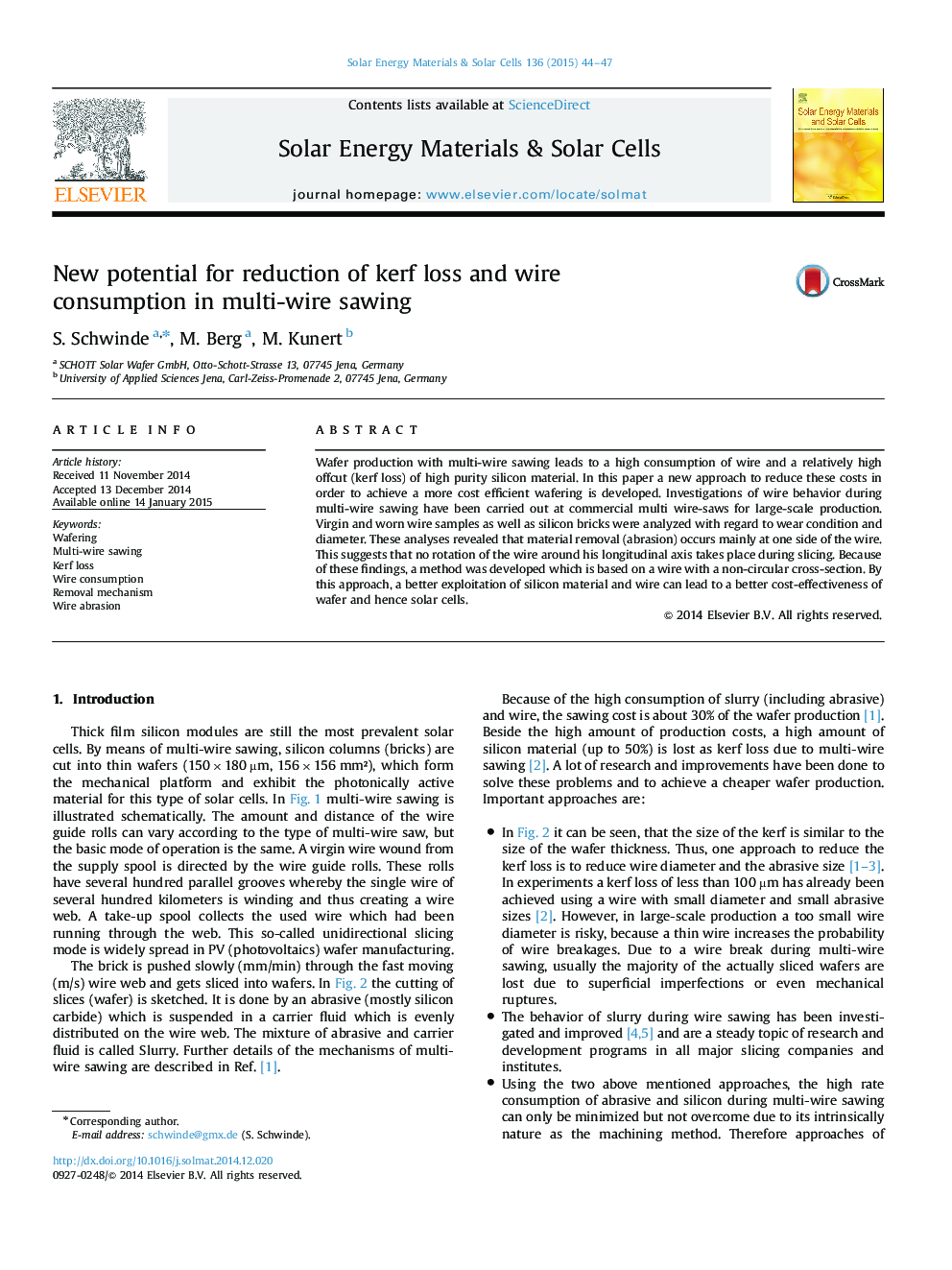| Article ID | Journal | Published Year | Pages | File Type |
|---|---|---|---|---|
| 77817 | Solar Energy Materials and Solar Cells | 2015 | 4 Pages |
•At multi-wire sawing, the wire material is already well-optimized.•No rotation of the wire around his longitudinal axis takes place during slicing.•Therefore, wires with a non-circular cross-section can be applied.•A non-circular cross-section leads to a lesser silicon and wire consumption.•A better cost-effectiveness of solar cells can be achieved.
Wafer production with multi-wire sawing leads to a high consumption of wire and a relatively high offcut (kerf loss) of high purity silicon material. In this paper a new approach to reduce these costs in order to achieve a more cost efficient wafering is developed. Investigations of wire behavior during multi-wire sawing have been carried out at commercial multi wire-saws for large-scale production. Virgin and worn wire samples as well as silicon bricks were analyzed with regard to wear condition and diameter. These analyses revealed that material removal (abrasion) occurs mainly at one side of the wire. This suggests that no rotation of the wire around his longitudinal axis takes place during slicing. Because of these findings, a method was developed which is based on a wire with a non-circular cross-section. By this approach, a better exploitation of silicon material and wire can lead to a better cost-effectiveness of wafer and hence solar cells.
